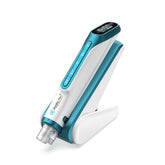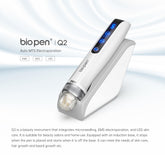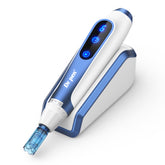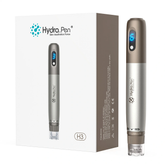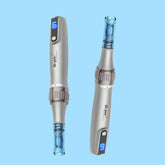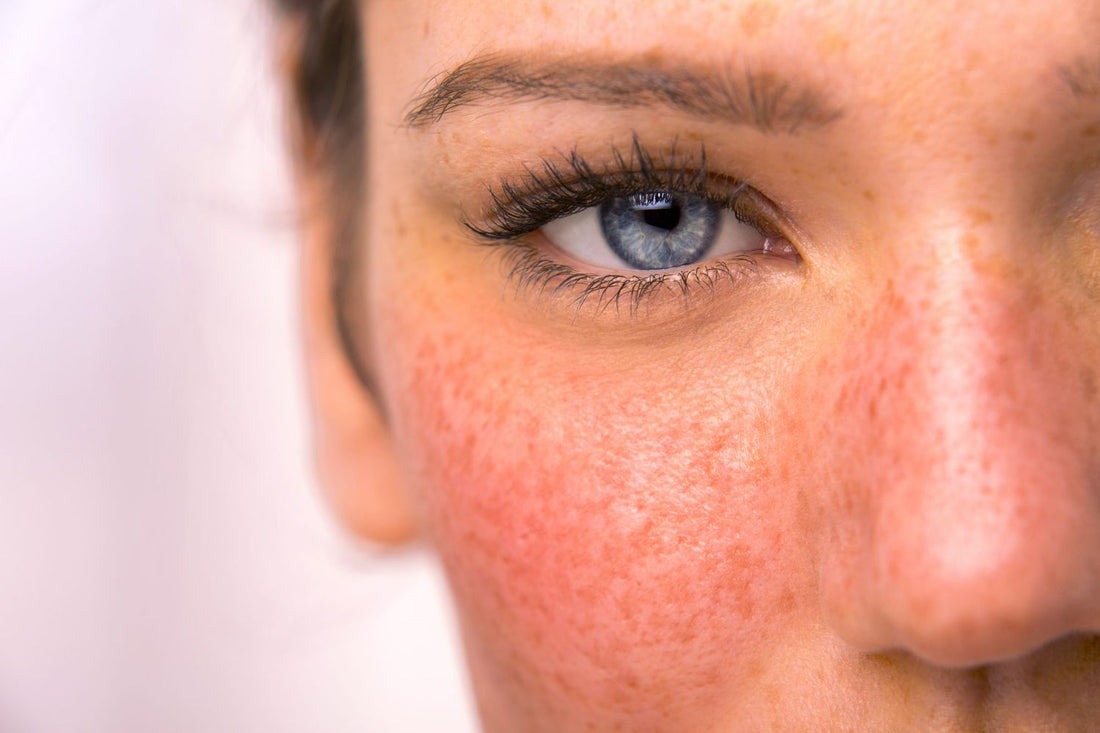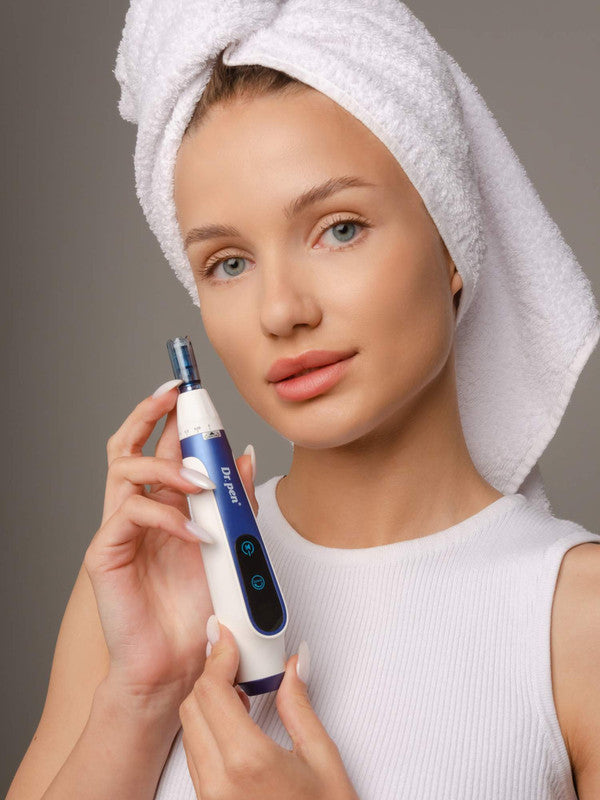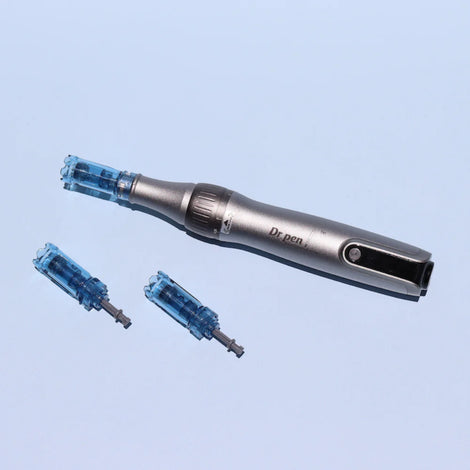It affects so many people. Many different factors can trigger it, and we still don’t exactly know what cures it or what causes it.
We’re talking about rosacea and anyone can develop it. Here we break down everything you need to know about rosacea and rosacea skin care - so you can tackle your redness with both strategy and care.
WHAT IS ROSACEA?
Rosacea is a skin condition that exclusively affects the face. It’s non-contagious and usually occurs in cycles that can last a few days to a few months.
There are four different types of rosacea; each has its own distinct set of symptoms.
Subtype 1 - Erythematotelangiectatic Rosacea
Subtype one is known as erythematotelangiectatic rosacea or shortened to ETR.
This kind of rosacea includes flushing and facial redness around the centre of the face. It consists of skin that is swollen, sensitive, dry, scaly and rough. It can make the skin feel like it’s stinging or burning.
Subtype one is associated with visible, broken blood vessels on the cheeks, nose and chin.
Subtype 2 - Papulopustular Rosacea
This subtype is referred to as papulopustular rosacea or is commonly known as acne rosacea.
This rosacea type is most common in middle-aged women and causes the skin to have acne-like breakouts and become very red.
Skin usually becomes oily, sensitive and has raised patches. Broken and visible blood vessels are also associated with this subtype.
Subtype 3 - Rhinophyma
Otherwise referred to as rhinophyma, this form of rosacea is rare and involves the skin on the nose, forehead, chin, cheeks or ears increasing in thickness.
It also includes large, visible pores and again, visibly broken blood vessels. It’s usually partnered with another type of rosacea and commonly found amongst men.
Subtype 4 - Ocular Rosacea
Subtype four is commonly known as ocular rosacea. This form of rosacea is found around the eyes.
With this kind of rosacea, the eyes may be bloodshot, burning, watery, stinging, itchy and sensitive to light. The eyes may have cysts, and vision may be diminishing. Another symptom for this subtype is broken blood vessels on the eyelids.
Symptoms are different for each subtype; it’s common to have more than one subtype of rosacea present. All rosacea symptoms only occur on the face.
If you are having redness or rashes elsewhere on your body, consult with your doctor about what conditions it could be.
WHAT CAUSES ROSACEA?
This is the bit no one wants to hear, but scientists haven’t found an exact cause of rosacea.
It’s likely a combination of factors, and both environmental and hereditary can contribute.
One common misconception about rosacea is that it’s caused by poor hygiene or a lack of cleansing - this is simply not true.
Here are known triggers that may cause rosacea to flare up:
- Hot drinks like coffee or tea
- Foods that are spicy
- Alcoholic beverages
- Exposure to sunlight
- Wind
- Smoking
- Stress
- Anxiety
- Exercise
- Medication that causes the blood vessels to dilate, such as high blood pressure medication
- Some cosmetic products (reactions to these are on a case by case basis)
- Eating foods that contain the compound cinnamaldehyde, this is in cinnamon, chocolate, citrus fruits and tomatoes
- Having helicobacter pylori, an intestinal bacteria, present in your body
- Having a skin mite, known as demodex, and the bacteria it carries, Bacillus oleronius
- Presence of a protein called cathelicidin, which is a pro-inflammatory peptide
- Overheating or exposure to very cold temperatures
IS THERE A CURE FOR ROSACEA?
Unfortunately, this is a chronic skin condition with no known cure.
Instead of being completely cured of rosacea, doctors recommend a rosacea skincare treatment on a case by case basis.
Rosacea, much like acne, varies from person to person. What triggers a flare-up in one person might not cause a flare-up in another.
Like many skin conditions, you’ll need to be prepared for some trial and error to learn what rosacea skincare and rosacea treatments work best for you.
WHAT PRODUCTS AND TREATMENTS HELP MANAGE ROSACEA?
There are various rosacea skin care products and treatments you can try, but you’ll likely need to combine this with medication and some lifestyle changes to manage your case of rosacea.
We recommend talking to your doctor about specific medication to take and avoiding the triggers listed above (if possible).
We have rosacea skin care tips and tricks that address that redness.
Be Gentle!
Firstly, you’ll need to invest in a super gentle cleanser. You don’t want anything harsh irritating your skin. Avoid cleansers that leave your skin feeling very tight and taut.
Tightness after cleansing indicates your skin has had its pH thrown out of balance which can strip moisture and compromise your skin barrier.
We don’t want to hurt the skin barrier; instead, we want to protect and nourish it, so it continues doing its job.
Avoid aggressive products such as physical scrubs or harsh chemical exfoliants. Rosacea skin is sensitive, and sensitive skin has a hard time tolerating these kinds of products without reacting.
Instead, opt for serums and formulas that hydrate and nourish the skin. Rosacea causes the skin to flush continually, and in that process, transepidermal water loss occurs. Put that moisture back in with hyaluronic acid or a hydrating cream that is preferably fragrance-free.
Protect Your Skin
A rosacea skincare routine should include products that protect the skin from free radicals and sun damage.
Opt for a serum that contains antioxidants and peptides, these ingredients fight free radical attackers, help boost the skin's natural healing response and keep your skin glowing.
Everyone should wear SPF daily, but particularly those with rosacea. Sunlight can cause a flare-up, so keeping your face protected every single day is a must.
Choose an SPF that is 50+ factor and contains mineral ingredients known to be gentle, such as zinc oxide and titanium dioxide. Always patch test any new products before use to ensure it is suitable for your skin.
Make sure you choose makeup suited to sensitive skin and has no fragrance. We don’t want the final step of your routine to send you into a rosacea flare-up.
A person with redness, visible veins and rosacea on their skin
THE TREATMENTS WE RECOMMEND
There are three treatments known to soothe rosacea redness and inflammation quickly and effectively; LED light therapy, microneedling and laser resurfacing.
Some medicines may cause the skin to be more sensitive. Always confirm with your medical professional first.
Microneedling
Microneedling, otherwise known as Collagen Induction Therapy, involves pricking the skin with small needles to induce a healing response. These small needles create micro-channels in the skin, and the skin responds to this injury by creating more collagen and elastin.
Over time, microneedling will help to thicken the dermis and epidermis. By having a thicker dermis and epidermis, the blood vessels’ and redness appearance beneath the skin is reduced.
When microneedling over rosacea is that it may cause more redness initially. This is due to the injuries that micro-needling intentionally causes. To reduce irritation, use plenty of hyaluronic acid serum during the procedure to avoid dragging across the skin.
Choose larger needle cartridges like the 36 or 42 pin size; this will evenly distribute the pressure more than a 9 or 12 pin cartridge and help prevent some irritation.
Using a larger microneedling cartridge will also cause less irritation. A great analogy is how we can lay on a bed of hundreds of needles because we can evenly distribute the pressure, but we cannot comfortably lay on a few needles.
FAQ: CAN YOU PREVENT ROSACEA?
Because the cause is unknown, there is no known way to prevent rosacea.
For those prone to rosacea, you can prevent flare-ups by avoiding the factors listed above, but there are no treatments or skincare products that can directly prevent this skin condition.
FAQ: HOW TO MINIMISE ROSACEA?
The best quick fix there is to hide that pesky redness is with makeup.
To neutralise the redness, apply a small amount of a green concealer to the red areas before applying foundation. This helps neutralise the skin tone and give you a good base for foundation, powder, or tinted moisturiser and stop lots of redness peeking through.
FAQ: CAN YOU DO MICRONEEDLING IF YOU HAVE ROSACEA?
Yes, but be careful.
Most people who have rosacea also have sensitive skin, so your microneedling protocol will be a little different.
Use a 36 pin or 42 pin cartridge, as this distributes the pressure better than say a 9 or 12 pin cartridge. Ensure you use plenty of hyaluronic acid whilst you microneedle to avoid the pen dragging and causing any further irritation.
Microneedling creates micro-channels in the skin, which are essentially micro-injuries. This tells the skin it needs to produce more collagen to heal these micro-injuries. Over time, this treatment will help strengthen your skin.
Apple cider vinegar may be too harsh of an ingredient to put onto rosacea-prone skin. This ingredient is known to be drying and irritating; we recommend steering clear of this ingredient and opting for a gentler, hydrating toner instead.
FAQ: DOES MENOPAUSE AFFECT ROSACEA?
Menopause is associated with hot flushes, and the heat from these hot flushes, unfortunately, may cause rosacea to flare up.
In the process of managing menopause-related hot flashes, you’re likely to be preventing rosacea flare-ups as best you can.
The only other link between menopause and rosacea is that rosacea mostly occurs in women aged 30 - 60, who are in or going into menopause.
LET’S CONCLUDE ON ROSACEA SKIN CARE
Like any skin condition, rosacea isn’t easy. It can seriously affect your mental health and other aspects of your life.
We want to reassure you that rosacea is manageable, there are things you can do to lessen the redness, swelling and inflammation, and it does not have to define who you are.
We hope this gave you some insight into rosacea and what your rosacea skincare routine should look like. If you have any questions about how our products will work with your skin, don’t hesitate to contact our customer service team.
We love to help and want to make sure you choose products that will work safely and effectively for your skin.




